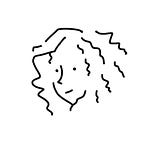7-Step Strategy to Launch Design Career in Tech
Having experience is often a requirement for landing a design role, but how do you gain experience when everyone is looking for experienced designers? Luckily, I have a solution and a step-by-step guide for you.
If you’re just starting your career or looking to switch fields, you may have completed courses and certifications, but still struggle to land an entry-level job. You may consider taking on a side job to support yourself during this transition, but before doubting yourself or looking into other fields, I challenge you to try this strategy.
While this isn’t the only way to your ideal design job, if I had to start over with no design background, this would be my go-to strategy. The truth is, product designers or any design role doesn’t solely rely on a portfolio. It’s 20% hard skills, 40% soft skills, and 40% background skills. Even after being in the field for eight years, I still dislike the work in my portfolio because I can see where I could have done better. Therefore, let’s focus on gaining the 40% background skills, so you can develop the 40% soft skills along the way, and the 20% hard skills will follow.
Step 1: Find the product/company you actually care about.
Identify a field or product that you have a strong personal interest in. If you’re already a user of one, it’s even more advantageous!
Compile a list of all that products and their competitors, from the biggest to the smallest, even including the less well-known ones.
Next, find a company with the design team that you would ideally like to work with (but don’t get too excited, you won’t be joining them just yet).
Step 2: Change the job search keywords.
To excel as a designer, it’s crucial to have a genuine concern for the user’s needs, behaviors, and habits. As a UX/Product designer, a significant part of your role is to empathize with the users, envision design solutions that would work for you, observe how people use them, and refine the solution accordingly. Therefore, it’s essential to develop a passion for the user’s problems before jumping to conclusions.
This might steer you towards a career in User Success, Customer Success, or User Support instead of Product Design. To pursue one of these fields, strong communication skills, empathy, and language proficiency are typically required.
Step 3: Apply to all the places you would like to work as a designer one day.
Shift your attention away from “design” and instead focus on your reasons to join the company and your empathy towards its users.
Position yourself as an ideal candidate for a customer support role. This approach can expedite the hiring process compared to seeking a design position. Once you land the job, the real work begins.
Step 4: Your career in the support team.
In the first 6 months, focus on nailing your work and becoming an advocate for users. Keep track of all the user issues and their resolutions, along with the person responsible for solving them. Also, work on building your personal brand, not just by updating your LinkedIn profile and posting generic content, but by demonstrating to your company that you’re invested in making users happy.
During the next 6 months, expand your network by creating meaningful connections beyond your immediate colleagues. Use this time to learn more about technology, business, and product development from the inside. Reach out to local designers and other professionals to gain access to first-hand information and knowledge. It’s a great way to broaden your perspective and stay informed about the latest industry trends.
Step 5: Let them know you’re available.
Starting at the 10 to 12-month mark, begin expressing your interest in transitioning to the product team within the company. Demonstrate your passion and commitment to the product and let the team know that you are eager to join them if an opportunity arises. Keep an eye out for any open positions and be ready to showcase your skills and enthusiasm for the role.
Step 6: Action time.
In any company, job openings don’t magically appear out of nowhere. It takes pressure from the team and a lot of overworking for HR or management to consider hiring new help. Sometimes the process can take months and when a vacancy does arise, it’s usually first offered to existing employees and their referrals before going public. If you have your sights set on a particular position, don’t hesitate to reach out to the hiring manager or recruiter.
Internal hires can be a win-win for the company and the employee. The company already knows you, trusts you, and you fit into the company culture. Plus, you have a better understanding of the users than any external hire would have in their first year. Aim for junior to mid-level roles, even if you’re not the best visual designer. The company would still prefer you over a more qualified candidate if you have proven yourself as a reliable and dedicated team member.
Step 7: Prepare for the best but be ready to wait a little longer.
Waiting for the perfect opportunity may take longer than expected. The team may require a seasoned senior designer or someone with more advanced experience, which is not in your immediate career path. Nonetheless, being in a company where you enjoy working is crucial. Although you may need to continue working in support for a little while longer, rest assured that you will eventually secure a design job.
Woohoo!
Thanks for getting here. Hope this will help you find your dream job one day. ✨
Have an exciting journey to share? Leave a comment!
Don’t forget to get in touch on Linkedin!
